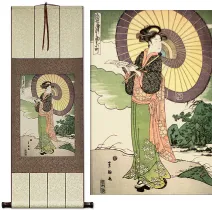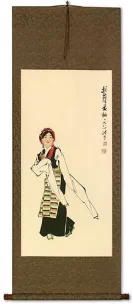Many custom options...
And formats...

Southern Praying Mantis in Chinese / Japanese...
Buy a Southern Praying Mantis calligraphy wall scroll here!
Southern Praying Mantis
南派螳螂 can be translated literally as “Southern School Praying Mantis” or “Southern Style Praying Mantis.”
Despite its name, the Southern Praying Mantis style of Chinese martial arts is unrelated to the Northern Praying Mantis style. Southern Praying Mantis is instead related most closely to fellow Hakka styles such as Dragon and more distantly to the Fujian family of styles that includes Fujian White Crane, Five Ancestors, and Wing Chun.
This style of martial arts focuses more on fighting skills rather than aesthetics.
Of course, you already knew that if you were looking for this term.
Note: This title can be pronounced and does have meaning in Korean but only to Koreans familiar with Chinese martial arts.
This in-stock artwork might be what you are looking for, and ships right away...
Gallery Price: $108.00
Your Price: $59.88
Gallery Price: $72.00
Your Price: $39.88
Gallery Price: $65.00
Your Price: $35.88
Gallery Price: $90.00
Your Price: $35.00
Not the results for Southern Praying Mantis that you were looking for?
Below are some entries from our dictionary that may match your Southern Praying Mantis search...
| Characters If shown, 2nd row is Simp. Chinese |
Pronunciation Romanization |
Simple Dictionary Definition |
南派螳螂 see styles |
nán pài táng láng nan2 pai4 tang2 lang2 nan p`ai t`ang lang nan pai tang lang |
More info & calligraphy: Southern Praying Mantis |
The following table may be helpful for those studying Chinese or Japanese...
| Title | Characters | Romaji (Romanized Japanese) | Various forms of Romanized Chinese | |
| Southern Praying Mantis | 南派螳螂 | nán pài táng láng nan2 pai4 tang2 lang2 nan pai tang lang nanpaitanglang | nan p`ai t`ang lang nanpaitanglang nan pai tang lang |
|
Successful Chinese Character and Japanese Kanji calligraphy searches within the last few hours...









